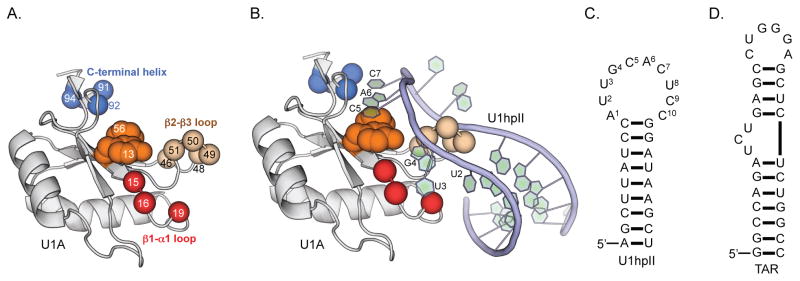Figure 1.
The U1A scaffold, and the molecular dictates for its interaction with U1hpII. (A) U1A N-terminal RRM, with putative RNA binding regions highlighted. (B) The U1A/U1hpII complex. Nucleotides that are directly engaged by U1A are highlighted. (C) Sequence and secondary structure of the U1hpII RNA hairpin used in this work, a binding partner of U1A. (D) Sequence and secondary structure of the TAR RNA hairpin used in this work.

